To generate a (billing) Contract, click on the Schedule of Values Tab.
To maximize the space for working with your Contract, we recommend closing the Bid Navigator when using the Schedule of Values Tab.

When you click on this Tab, if there is no existing Contract, the first thing you do is create one.
Click the New Contract button  and then fill in the information for the new contract.
and then fill in the information for the new contract.
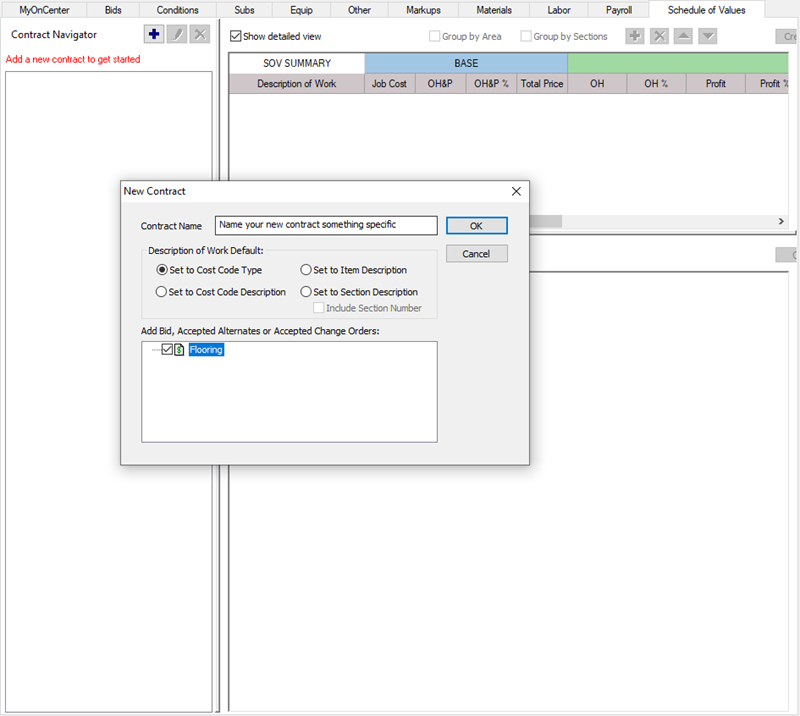
Name the Contract and select which Costs from the Base Bid, Accepted Alternates (if any), and Accepted Change Orders (if any) to include. Once a Bid or Child Bid is included in a Contract, it cannot be included in another Contract.
You will also choose to use Cost Code Type (Material, Labor, Equipment, etc.) or Cost Code Description for the Contract (examples below).
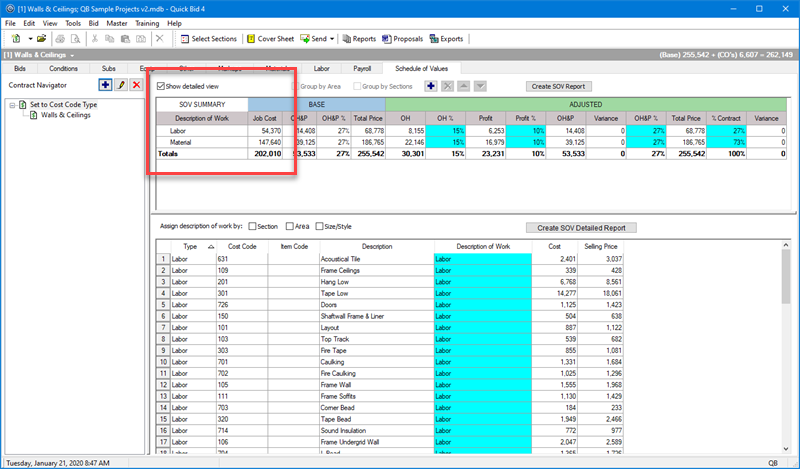
Shown by Cost Code Type
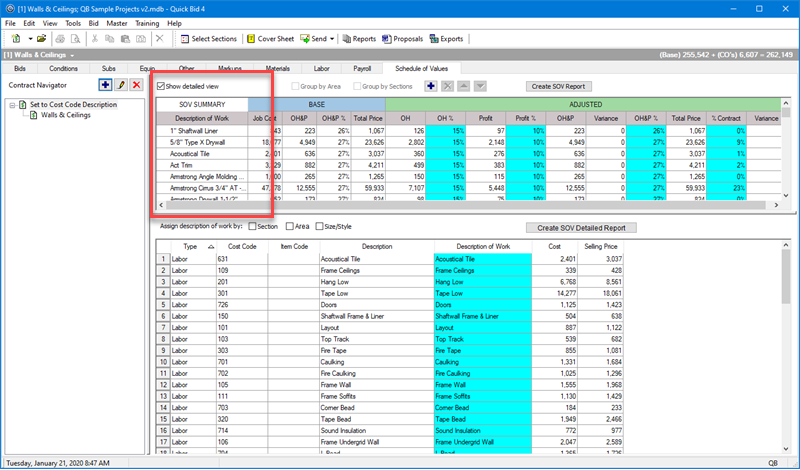
Shown by Cost Code Description
In the grid, you can to see a breakdown of the costs from the SOV Summary panel. From the details, you can change the Description of Work for each Cost Code (or Cost Code Description, if that's how you've chosen to setup your contract)
If you don't need to see Details for each Cost Code Type or Description, you can un-check Show Detail View .
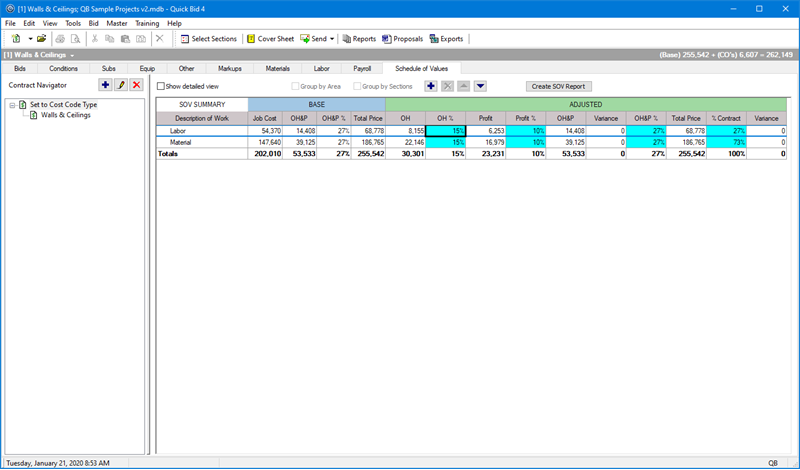
When you select "Cost Code Type" your bid Costs are allocated to "Labor", "Material", "Equipment", "Other", "Subcontractor", "Tax" (all Labor Burdens, combined), and "AM" (Additional Markup), by default - you can adjust these in the Details section.
You can assign Description by Section, Area, or Size/Style by checking the appropriate option. We've selected "Areas" in the screenshot below.
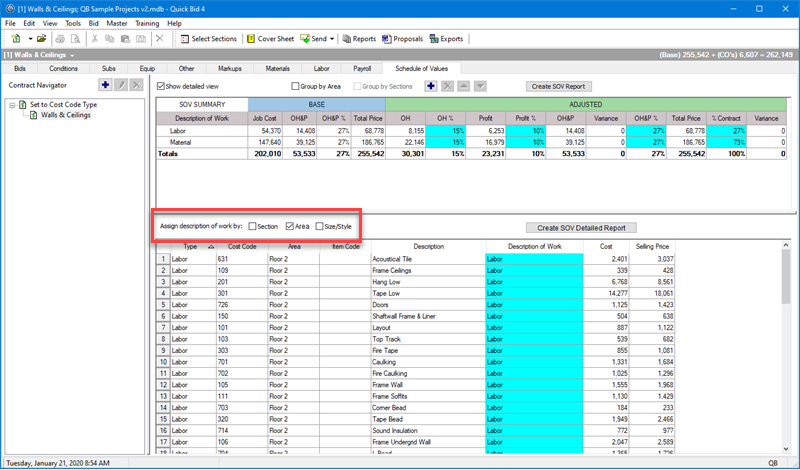
When you select Section, Area, or Size/Style, you can set the "Description of Work" even more granularly.
As you change the "Description of Work' in the details grid, your SOV Summary (upper grid) updates:
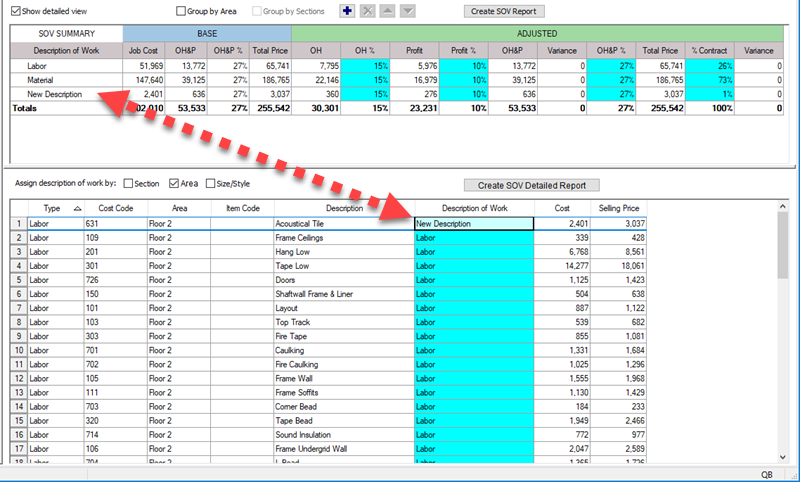
You change the Description of Work in the lower grid to affect how costs are "rolled up" in the upper grid.
In the upper grid, you modify the Overhead and Profit percentages, or you can plug in values. You can edit the values in any of the blue columns (Overhead %, Profit %, OHand P %, and % Contract) and the "Total Price" column. Changing one updates the others, as needed. As you modify percentages, you will notice that your "Variance" will change. The "Variance" is how far from the actual Total Bid Amount this contract is. Ideally, you want to get your Variance to "0", or very close, so your Contract (billing) matches your estimate.
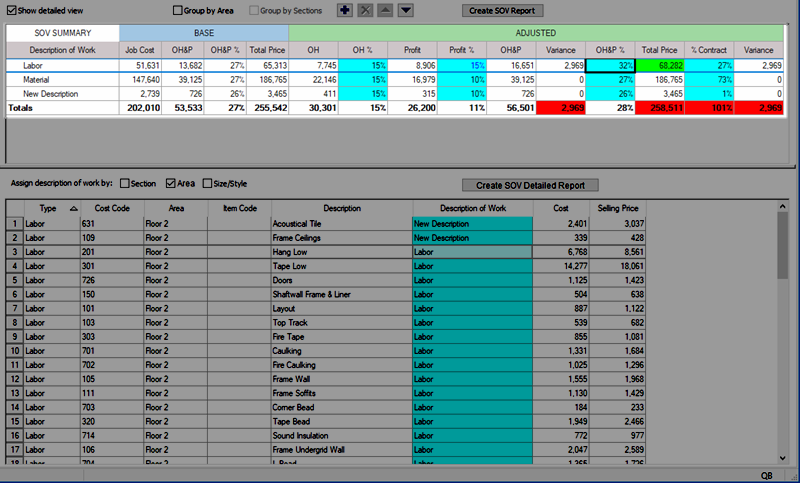
When you are looking at the "Totals" row in the upper grid, keep in mind that the Adjusted Overhead %, Profit %, and OHand P% columns are not summations or averages of the information in the column These are calculated by dividing the Overhead, Profit, or O and H amount by the Job Cost Total.
When all your adjustments are complete, you are ready to generate your Contract. See the next article.
